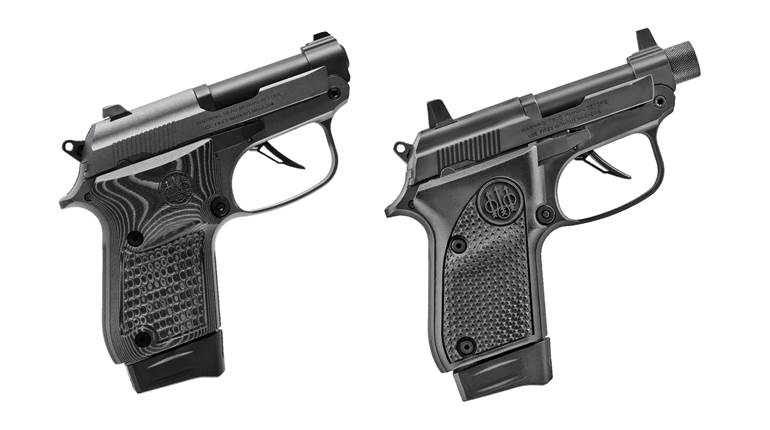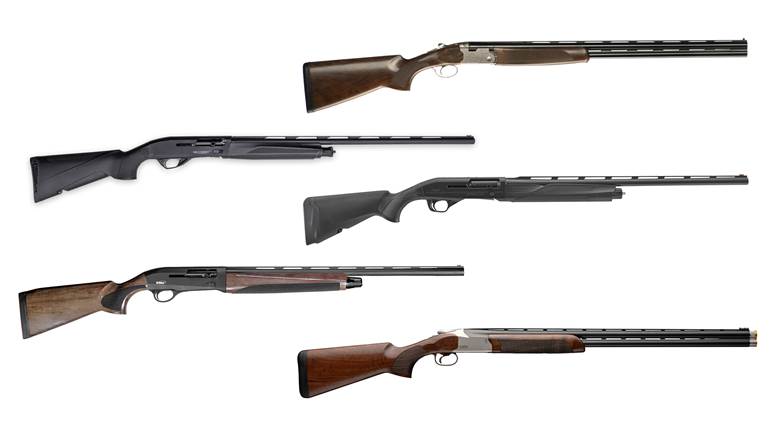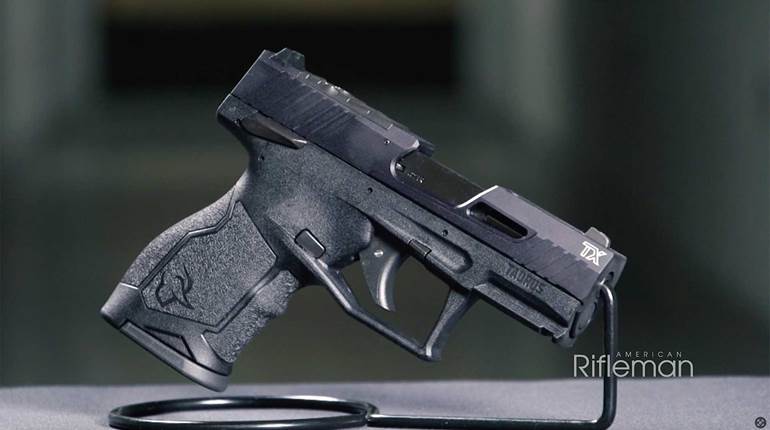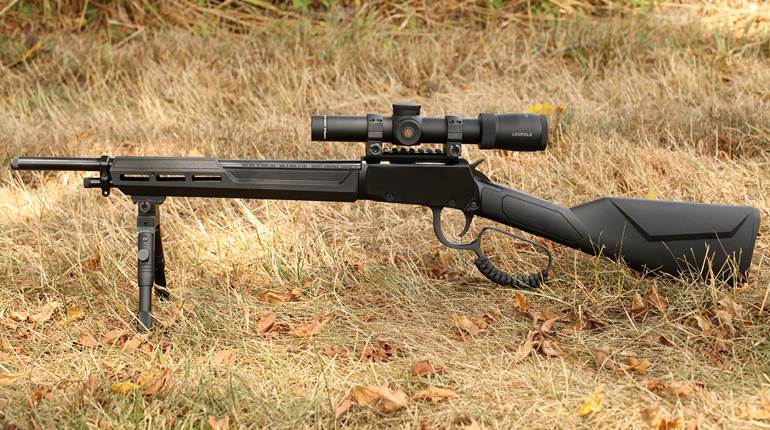
Many who rely on a firearm for home defense or some other form of personal protection believe there is no better answer than the tactical shotgun, and they may have a point. You don’t have to be as precise as with a handgun or a rifle, the results on target can be truly devastating and, in the field, the fighting shotgun is a potent choice for protection against bears and other large four-legged predators.
Beretta’s 12-ga. 1301 Tactical is a fast-handling and fast-feeding shotgun designed specifically for home defense, personal protection, competition, and military and law enforcement use. For the purpose of this review we tested the 1301 Tactical Marine model, intended for use aboard watercraft and in salt-water environments.
An exceptionally short and light shotgun—at 37 3/4" long and weighing 6 lbs., 5 ozs.—the 1301 Tactical Marine makes use of a 18½" barrel that comes with both a flush-fitting and extended Beretta Optima HP-compatible choke tube. Both tubes measured cylinder (0.000") against the bore of 0.730"—excellent for its intended role.

The 1301 Tactical Marine uses the same Blink gas-operating system also found on the company’s A400 platform that cycles the action exceptionally quickly—in the blink of an eye. One of the added advantages of the system is the relatively mild recoil from heavy loads. The stock’s length of pull measures a short 13 1⁄16", which is preferred by many shooters of tactical arms. Included in the hard case are two spacers (one measuring 1" and the other measuring 5/8") for those wishing to extend this measurement. In addition, the 1301 Tactical comes with a set of shims with which the user can adjust both the shotgun’s drop and cast.
Moving to the 37⁄8"-deep receiver, the hand and eye go to the shotgun’s oversized controls, which have been enlarged in order to facilitate fumble-free operation even in tense situations, while likely clad in gloves. The bolt release on the right side of the receiver measures 1 1⁄8" long and 3/8" wide, enabling a slap of the hand to send the bolt home, while a textured, elongated handle extends from the bolt. A large, reversible, push-button safety projects slightly past the side of the receiver, making it easy to find and operate.
The 1301 Tactical Marine uses the familiar Beretta two-piece carrier. In order to hold the bolt open with an empty gun, the small cylindrical button at rear of the carrier that lifts the shells from the magazine must be pressed, dropping the carrier and enabling the bolt to remain locked to the rear.
Sighting on the 1301 Tactical is by means of a ghost-ring rear unit and a blade front. The rear sight is adjustable both for elevation and windage and has a tritium dot on each side of the ring for fast acquisition in dark situations. The front blade is similarly endowed with a tritium dot at the top back of the blade, and is protected by two curved wings. In addition, there is a 3 1⁄8" section of aluminum Picatinny rail mounted atop the receiver directly in front of the rear sight to accommodate optics or other devices.

The stock and fore-end are synthetic, as are the trigger guard and magazine cap. The aluminum receiver and steel barrel of the 1301 Tactical Marine are coated with a high-visibility, silver Aqua-Tech finish for increased resistance to the corrosive effects of a marine environment. The stock and fore-end have aggressive molded-in checkering for a sure grip even when wet. Our sample’s trigger was exemplary for a tactical shotgun, breaking at 5 lbs., 10 ozs., of pressure after just a slight bit of creep.
At the range, we function tested the Beretta with three brands of 00 buckshot ammunition: Federal Premium Personal Defense, Hornady Black and Winchester Razor Boar XT. Over the course of shooting, despite the light weight of the gun, we found the recoil of these heavy loads to be quite manageable. We also experienced no malfunctions.
 During pattern testing at 25 yds. with the nine-pellet Federal load, all of the projectiles remained within a 21" circle of the point of aim, with the average spread for 10 shells measuring an impressively tight 5.6". Of the 90 total pellets fired, zero projectiles separated themselves so far from their core patterns as to be categorized as “fliers.”
During pattern testing at 25 yds. with the nine-pellet Federal load, all of the projectiles remained within a 21" circle of the point of aim, with the average spread for 10 shells measuring an impressively tight 5.6". Of the 90 total pellets fired, zero projectiles separated themselves so far from their core patterns as to be categorized as “fliers.”
The sights seemed to have been regulated from the factory for firing at 25 yds., as the impacts closely coincided with our point of aim at that distance. We also measured the velocity of the Federal ammunition by shooting a five-shot string over an Oehler 35P chronograph at 4 ft. Our testing yielded an average result of 1087 f.p.s., 58 f.p.s. shy of the manufacturer’s advertised muzzle velocity (1145 f.p.s.) for the load.
Beretta’s 1301 Tactical Marine has proven itself throughout our testing to be a capable little shotgun—sized to be handy in defensive scenarios, while also providing rock-solid reliability with defensive loads. Those in need of a tactical scattergun for use in maritime environments should give it due consideration.






































